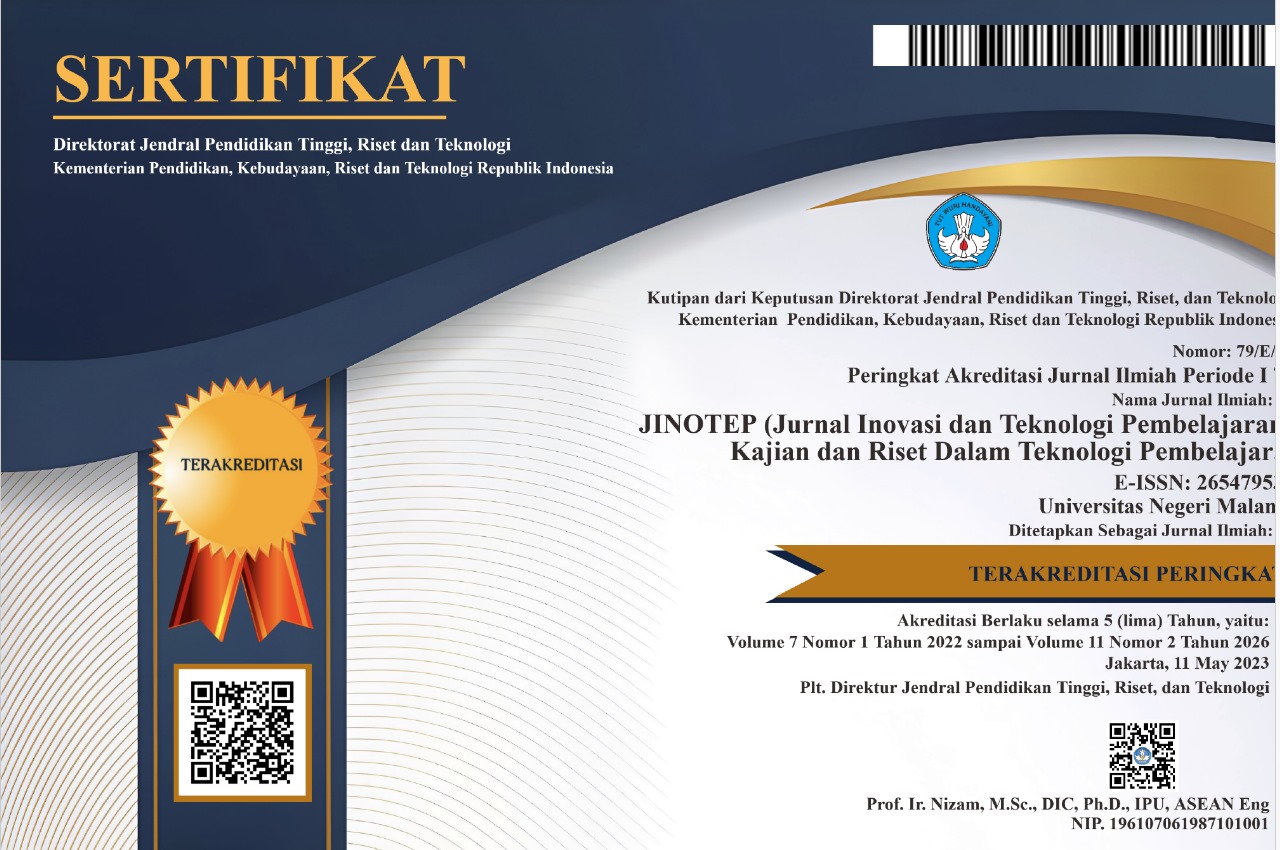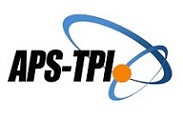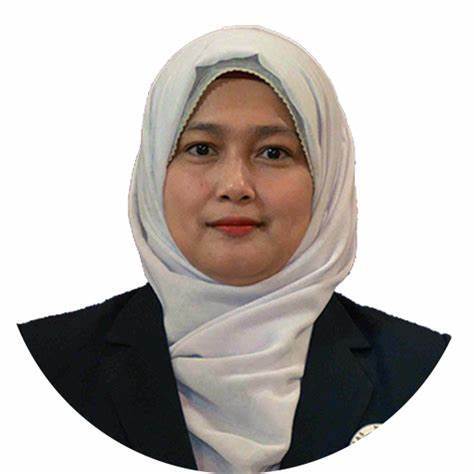Pengembangan Paket Bahan Ajar Bahasa Korea Berbantuan Mobile Device Untuk Kelas X Di SMA Diponegoro Tumpang
Abstract
Abstrak: Tujuan penelitian dan pengembangan ini adalah menghasilkan paket bahan ajar cetak Bahasa Korea untuk kelas X di SMA Diponegoro Tumpang yang layak dan dapat digunakan secara klasikal maupun individual berbantuan Mobile Device berupa Smartphone. Paket bahan ajar ini terdiri dari bahan ajar, panduan guru, dan panduan siswa. Pengembangan bahan ajar ini menggunakan model pengembangan Dick and Carey. Langkah pada model Dick and Carey yang digunakan adalah sampai evaluasi formatif. Subjek penelitan pengembangan ini adalah 29 siswa dan seorang guru. Uji coba dilakukan sebanyak tiga kali yaitu uji coba perorangan, uji coba kelompok kecil, dan uji coba lapangan. Instrumen pengumpulan data yang digunakan adalah angket, wawancara, dan observasi. Data yang dikumpulkan berupa data kuantitatif dan kualitatif. Hasil uji coba perorangan menunjukkan paket bahan ajar sangat valid atau dapat digunakan tanpa revisi (bahan ajar 86,97%, panduan siswa 86, 66%). Hasil uji coba kelompok kecil menunjukkan bahan ajar dalam kondisi cukup valid atau dapat digunakan dengan revisi kecil (84,68%), panduan siswa dalam kualifikasi sangat valid atau dapat digunakan tanpa revisi (86,56%). Hasil uji coba lapangan menunjukkan paket bahan ajar dalam kualifikasi sangat valid atau dapat digunakan tanpa revisi (bahan ajar 85,41%, panduan guru 90%, panduan siswa 86,80%, tanggapan guru terhadap bahan ajar 90%). Hasil tes hasil belajar menunjukkan bahan ajar dapat membantu siswa mencapai tujuan pembelajaran.
Abstract: The purpose of this research and development is to produce a package of Korean Language print materials for class X in Diponegoro Tumpang High School that is feasible and can be used classically or individually assisted by Mobile Devices in the form of Smartphones. This teaching material package consists of teaching materials, teacher guides, and student guides. The development of this teaching material uses the Dick and Carey development model. The steps in the Dick and Carey model used are until formative evaluation. The subjects of this development research were 29 students and a teacher. Trials were conducted three times, namely individual trials, small group trials, and field trials. Data collection instruments used were questionnaires, interviews, and observations. Data collected in the form of quantitative and qualitative data. The results of individual trials show that the teaching materials package is very valid or can be used without revisions (86.97% teaching material, 86, 66% student guidance). The results of the small group trial show that the teaching material in the condition is quite valid or can be used with a small revision (84.68%), the student's guide in qualification is very valid or can be used without revision (86.56%). The results of the field trials show that the teaching materials package in the qualifications is very valid or can be used without revisions (85.41% teaching material, 90% teacher guidance, 86.80% student guidance, 90% teacher responses to teaching materials). The results of the learning outcomes test show that teaching materials can help students achieve learning goals.
Keywords
Full Text:
PDFReferences
Akbar, S. 2013. Instrumen Perangkat Pembelajaran. Bandung: Remaja Rosdakarya.
Ciaramitraro, B. L. 2012. Introduction to Mobile Technologies. Pennsylvania: IGI Global. Online (http: http://eresources.pnri.go.id:2092/gateway/book/52743, diakses pada 13 Oktober 2014).
Darmaprawira, S. 2002. Warna Teori dan Kreativitas Penggunaanya. Bandung: Penerbit ITB.
Dick, W., Carey, L. & Carey, O. J. 2009. The Systematic Design of Instruction. New Jersey: Pearson.
Houser, C. & Thornton, P. 2009. Mobile Educational Technology. Pennsylvania: IGI Global. Online.(http: http://eresources.pnri.go.id:2092/gateway/chapter/full-text-pdf/27377,dakses pada 4 November 2014)
Miangah, T. & Nezarat, A. 2012. Mobile-Assisted Language Learning. International Journal of Distributed and Parallel Systems. (Online), 3(1): 309-318 (http:airccse.org/journal/ijdps/papers/0112ijdps26.pdf) Diakses pada 24 Oktober 2014.Perdana, J. 2013. 41 Juta Masyarakat Indonesia Miliki Smartphone, 95%-nya Digunakan di Rumah.
Online. (http: http://www.themarketeers.com/?post=41-jutamasyarakat-indonesia-milikismartphone-95nya-digunakandi-rumah, diakses pada 22Oktober 2012).
Setyosari, P.2013. Metode Penelitian Pendidikan & Pengembangan Edisi Ke-3. Jakarta: Kencana.
Valaramathi, K. E. 2011. Mobile Assisted Language Learning. Journal of Technology for ELT , 2 (2). (Online), (http://sites.google.com/site/journaloftechnologyforelt/archive/ap ril2011/mobileassistedlanguagel earning), diakses pada 26 Oktober 2014.
Yang, J. S. 2013. Mobile Assisted Language Learning: Review of the Recent Application of Emerging Technologies. English Language Teaching, (Online), 6(7): 19-25 (http: http://eresources.pnri.go.id:2056/docvie w/1437615127/fulltextPDF?accountid=25704 Diakses pada 26 Oktober 2014.
Yedla, S. 2013. MALL (Mobile Assisted Language Learning): A Paradise for English Language Learners.
International Journal of English & Translation Studies, (Online), 1 (2): 91-99 (http: eltsjournal.org), diakses pada 26 Oktober 2014.
DOI: http://dx.doi.org/10.17977/um031v2i12015p249
Refbacks
- There are currently no refbacks.
Copyright (c) 2015 Dwi Ristin Sulistiana, Sulton Sulton, Anselmus JE Toenlioe

This work is licensed under a Creative Commons Attribution-ShareAlike 4.0 International License.
======================================================================
Jurnal Inovasi dan Teknologi Pembelajaran published by Universitas Negeri Malang in collaboration with the Asosiasi Program Studi Teknologi Pendidikan Indonesia (APS TPI) and Ikatan Profesi Teknologi Pendidikan Indonesia (IPTPI) with a MoU.
Publisher Address:
Educational Technology Laboratorium, Building D5, 1st Floor
Faculty of Education, Universitas Negeri Malang
Semarang St. No. 5, Malang City, East Java Province, Postal Code 65145
Email: jinotep.fip@um.ac.id
======================================================================

JINOTEP is licensed under a Creative Commons Attribution-ShareAlike 4.0 International License.
JINOTEP Statistics (Since July 13th, 2020)


.png)




.png)
1.png)
1.png)
4.png)
2.png)
1.png)
1.png)
.png)


_3.png)





1.png)
.png)